Number 65
Printable version for real-life distribution
- Humanity fights back!
- Ten things we have learned during the Covid coup
- Naomi Klein and the climate of hypocrisy
- The nature of philosophy
- William Morris: an orgrad inspiration
- Acorninfo
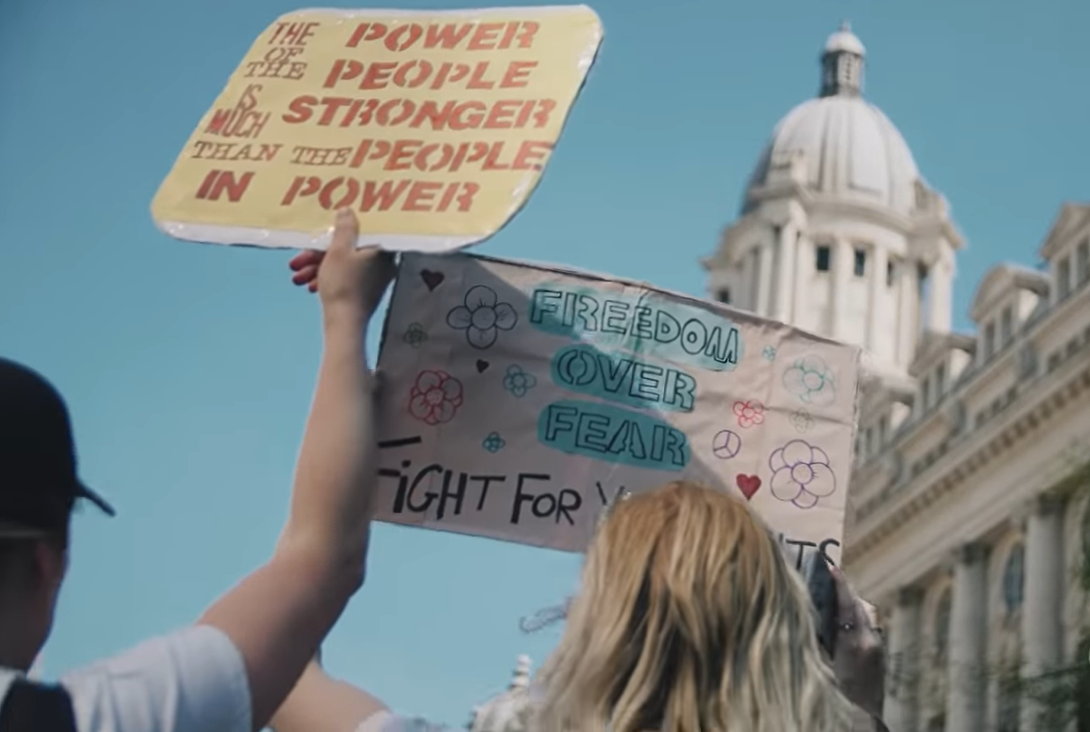
We are not so foolhardy as to suggest that the tide has finally turned in humanity’s struggle against the Great Fascist Reset being imposed on the back of Covid.
But there have certainly been some encouraging signs since our last bulletin came out, not least the increasing note of desperation in the official technocrat narrative!
Take, for instance, this ridiculous article on the Nature website in the USA, which calls for “a high-level counteroffensive” against the terrible “peril” of people wising up to what is going on.
It declares citizens concerned about the Covid jab to be “new destructive forces” involved in “anti-science” and ranks such questioning alongside “global threats such as terrorism, cyber attacks and nuclear armament”.
The good news is that, from the back-to-front perspective of author Peter Hotez (who has form for this kind of thing, as the Corbett Report has pointed out), “the bad guys are winning”!
Demands for critics of vaccination to be thrown off social media have also been made by a group of US politicians.
 Interestingly, both Hotez’s article and the politicians’ letter found inspiration from the Center for Countering Digital Hate, which, despite the American spelling of “Center” in its title, is a UK-based organisation.
Interestingly, both Hotez’s article and the politicians’ letter found inspiration from the Center for Countering Digital Hate, which, despite the American spelling of “Center” in its title, is a UK-based organisation.
The fact that it has an office in the USA is no doubt linked to the fact that its chief executive officer Imran Ahmed “lives in Washington DC“.
The CCDH previously came into prominence for its role in stoking up the Labour Party “anti-semitism” controversy in the UK. Its patron is Rachel Riley, the pro-Israel TV presenter who notoriously smeared Jeremy Corbyn.
CCDH boss Ahmed used to work as a spin doctor for Blairite Labour Party politician Angela Eagle.
In 2020 the CCDH suddenly, and inexplicably, switched its focus from Labour “anti-semitism” to attacking those who dared to challenge the official line on Covid, as we reported in March 2020. Note how their very involvement is used to associate the word “hate” with a love of freedom and ability to think for oneself!
The “bad guys” opposing techno-fascism have not just been presenting a “threat” on the internet, of course, but out on the streets, a major highlight being the massive April 24 protest in London.
The next big freedom protest in the UK capital has been called for Saturday May 29.
And it is a good sign that even the mask-compliant left are now getting involved in opposing the police-state nightmare into which we are being propelled, as witnessed by the (smaller) May 1 protests.
There have also been significant protests in Belgium, Netherlands, Quebec, Germany, Canada and Denmark.
A festive element is also becoming increasingly apparent, as the movement overspills traditional “political” forms and turns into a deeply-felt revolt of life against the Great Reset transhumanist death-cult.
This spirit of resistance is very encouraging, whether it takes the form of a street party in New York, a supermarket rave in the Netherlands, or the “Still Standing For Culture” initiative in Belgium which is set to defy restrictions and reopen 150 venues.

In France, flashmob performances of the song Danser Encore by HK et Les Saltimbanks, the defiant new anthem of freedom and joie de vivre, have now spread further afield to Réunion, the French-ruled island in the Indian Ocean, to Brussels (even with the actual band!), to Switzerland (here as well), to Barcelona, where it is sung in Catalan, to Madrid (in Spanish) to Germany (in German plus here), to the Netherlands (in Dutch) and to Italy, with street performances in both French and Italian.
The kind of people who are trying to impose the Great Reset are degraded individuals, corrupted individuals, emptied of all inner moral content and motivated purely by fearful conformism and egotistical self-advancement.
As such, they cannot even imagine that different kinds of human beings exist, people whose values reach way beyond their immediate self-interest and convenience, people who cherish life and want to experience it fully, people who simply refuse to be chained and suffocated.
The grey-faced and dead-eyed technocrats have no idea what strength, what courage, what infinite yearning for freedom lies deep with the collective human heart and is waiting to surge forth with unstoppable and joyful life-energy to defend its future happiness when this is at mortal risk.
But they are about to find out!
2. Ten things we have learned during the Covid coup

One potential positive from the whole Covid-19 debacle is that we have learned an incredible amount about the society in which we live. This will be crucial if we manage to stave off a descent into a nightmare future of techno-fascist slavery.
We will have a new understanding of what our world has become and what we would like it to be in the decades and centuries to come. And “we” means we. While the majority have apparently learnt nothing at all from what has happened, they will eventually catch up.
There is no way that knowledge gained by a wide-awake 15% or 20% of the population will not end up being shared by almost everyone. Once the truth is out, it tends to stay out. As H.R. Haldeman so wisely put it, “you can’t put the toothpaste back in the tube”.
Here are Ten Things We Have Learned During the Covid Coup:

1. Our political system is hopelessly corrupt. Virtually all politicians are hopelessly corrupt. No political party can be trusted. They all can be, and have been, bought.
2. Democracy is a sham. It has been a sham for a very long time. There will never be any real democracy when money and power amount to the same thing.
3. The system will stop at nothing to hold on to its power and, if possible, increase its levels of control and exploitation. It has no scruples. No lie is too outrageous, no hypocrisy too nauseating, no human sacrifice too great.
 4. So-called radical movements are usually nothing of the sort. From whatever direction they claim to attack the system, they are just pretending to do so and serve to channel discontent in directions which are harmless to the power clique and even useful to its agendas.
4. So-called radical movements are usually nothing of the sort. From whatever direction they claim to attack the system, they are just pretending to do so and serve to channel discontent in directions which are harmless to the power clique and even useful to its agendas.
5. Any “dissident” voice you have ever heard of through corporate media is probably a fake. The system does not hand out free publicity to its actual enemies.
6. Most people in our society are cowards. They will jettison all the fine values and principles which they have been loudly boasting about all their lives merely to avoid the slightest chance of public criticism, inconvenience or even minor financial loss.
7. The mainstream media is nothing but a propaganda machine for the system and those journalists who work for it have sold their sorry souls, placing their (often minimal) writing skills entirely at the disposition of Power.
 8. Police are not servants of the public but servants of a powerful and extremely wealthy minority which seeks to control and exploit the public for its own narrow and greedy interests.
8. Police are not servants of the public but servants of a powerful and extremely wealthy minority which seeks to control and exploit the public for its own narrow and greedy interests.
9. Scientists cannot be trusted. They will use the hypnotic power of their white coats and authoritative status for the benefit of whoever funds their work and lifestyle. He who pays the piper calls the tune.
10. Progress is a misleading illusion. The “progress” of increasing automisation and industrialisation does not go hand in hand with a progress in the quality of human life, but in fact will “progressively” reduce it to the point of complete extinction.
3. Naomi Klein and the climate of hypocrisy

Naomi Klein is still remembered by many as an influential figure in the anti-globalisation/anti-capitalism movement which shook the Western world 20 years ago.
Books like No Logo and, later, The Shock Doctrine, opened many people’s eyes for the first time to the manipulative ways of the global neoliberal system.
It is only to be expected, therefore, that there are parts of her latest book, How To Change Everything, (1) with which we are in agreement.
For example, we would very much echo her description of “disaster capitalism” as being “when the rich and powerful take advantage of painful shocks to widen existing inequalities instead of correcting them”. (2)
 Klein adds: “The rich and powerful see these tragedies as chances to seize control and change things in ways that favor banks, industry, and powerful politicians, not ordinary people. Disasters are opportunities for change because they disrupt normal life. In a state of emergency, ordinary laws and practices may be suspended. People feel desperate and confused. They may be so concerned with survival or recovery that they cannot focus on the large questions of what is being done, and who is benefiting”. (3)
Klein adds: “The rich and powerful see these tragedies as chances to seize control and change things in ways that favor banks, industry, and powerful politicians, not ordinary people. Disasters are opportunities for change because they disrupt normal life. In a state of emergency, ordinary laws and practices may be suspended. People feel desperate and confused. They may be so concerned with survival or recovery that they cannot focus on the large questions of what is being done, and who is benefiting”. (3)
Likewise, we are completely on board with her warnings against greenwashing, (4) “the environmental movement’s drift toward business-oriented solutions” (5) and “the powerful influence of pro-business ideas”. (6)
The book commendably traces “the scars of industrial progress” (7) back to the mechanistic philosophies propounded by the likes of John Locke, René Descartes and Francis Bacon, (8) with his vision of the Earth as “an unliving machine whose mysteries could be mastered and plundered by the human mind”. (9)
Klein even quotes orgrad inspiration Henry David Thoreau when he declared: “The Earth I tread on is not a dead, inert mass. It is a body, has a spirit, is organic….” (10)
But, sadly, the work as a whole leaves a saccharine after-taste of inauthenticity in the mouth of the discerning reader.
Part of the problem, of course, is that the book is aimed at teenagers and is subtitled ‘The Young Human’s Guide to Protecting the Planet and Each Other‘.
 Klein wrote it “with” Rebecca Stefoff (pictured), a professional scribe who specialises in targeting that particular age group, and who, on her own site, actually refers to the work as “my newest book”!
Klein wrote it “with” Rebecca Stefoff (pictured), a professional scribe who specialises in targeting that particular age group, and who, on her own site, actually refers to the work as “my newest book”!
Regardless of who was ultimately the actual author, the simplified language and explanations give the book the rather sinister feel of being nothing but carefully-crafted propaganda aimed at influencing a particular generation in a certain, very specific, way.
There is, of course, much promotion of the Greta Thunberg brand, with the mythologised version of her story (now entirely debunked by Cory Morningstar and others) wheeled out with a facile zeal which allows the authors to describe the Swedish youngster’s autism as “Greta’s Superpower”. (11)
“Public protest can be a powerful way to make a statement, but protest doesn’t always make things happen overnight. At first people ignored Greta as she sat with her sign. Gradually, though, her protest got a bit of attention in the news”, says their storytelling. (12)
“A movement can start out as small as a single Swedish schoolgirl sitting on a step, holding a sign that warns of climate change, then grow to cover the world”. (13)
Ah yes, of course. That’s how the world works, children. Now go back to sleep.
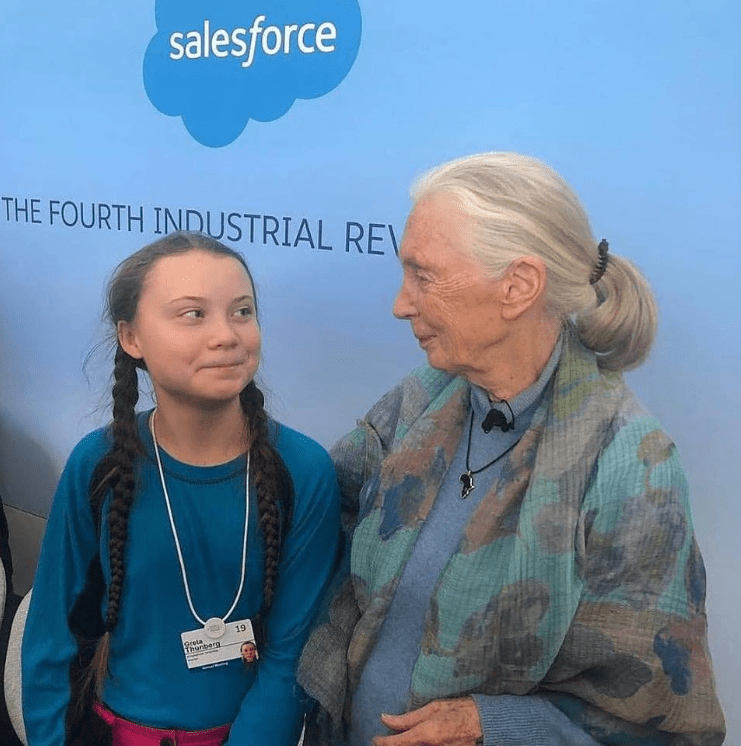
The book even celebrates the fact that “in December 2019, Time magazine named Greta Thunberg its youngest-ever Person of the Year for her activism in calling attention to the climate crisis” (14) without feeling it necessary to mention that Time is owned by Marc Benioff of Salesforce, a leading associate of Klaus Schwab’s WEF and enthusiast for the Fourth Industrial Revolution and Great Reset.
There are times when one has the impression of reading not so much a book as a glossy advertising brochure for the “renewable energy” industry, aka climate capitalism.
There is lots of talk about wind turbines and solar panels, the latter being hailed as “the best hope for survival”, (15) “a step toward green, renewable energy—and environmental justice”. (16)
Klein and Stefoff rightly declare, of fossil fuels: “Depending on fossil fuels to power our lives means sacrificing people and places. To extract these fuels, people’s healthy lungs and bodies must be sacrificed to the bad air and the dangerous work of coal mining. People’s lands and water are also sacrificed to damage from mining, drilling, and oil spills”. (17)
But there is strangely no mention of the extraction, destruction and pollution involved in the manufacture, transportation and disposal of solar panels, pieces of industrial equipment which seem to have been turned into organic and “renewable” offshoots of Nature herself by the briefest wave of the magical greenwashing wand.
Sick bags all round for the passage where someone called Henry Red Cloud justifies covering what was once a traditional Native village with solar panels by insisting that “solar power was always part of Natives’ lives…. It ties in with our culture, our ceremony, our language, our songs” (18) and describes those installing this industrial hardware as “solar warriors”! (19)

The authors are, in fact, quite shameless in promoting an explicitly hi-tech industrial future, while dressing up their rhetoric with talk of Thoreau and nature and age-old Native culture.
Anyone battling to protect the English countryside from the HS2 high-speed railway line project might be interested to know that Klein and Stefoff think the answer to environmental problems is to “build networks of fast electric trains”. (20)
Mooted “solutions” for the environmental crisis (questioned but not entirely dismissed) also include industrial “carbon capture and storage” (21) and geoengineering schemes such as “placing mirrors in orbit to keep sunlight from reaching the Earth, sending chemicals into the atmosphere to create artificial clouds, and building giant filters to pull greenhouse gases out of the air”. (22)
They could only hope to get away with the notion of “vehicles that do not emit greenhouse gases” (23) in a book aimed at the young, since anyone not born yesterday has understood that electric cars merely displace pollution to the site of power generation.
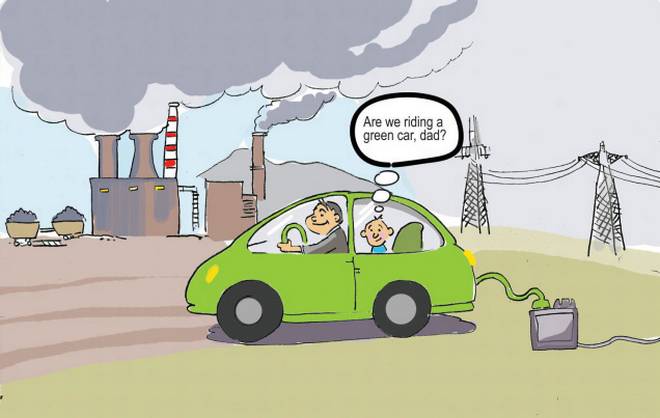
There is much talk of the “tools” with which the planet will be saved, which seems to be a rather coy way of referring not just to the continuing advance of the very industrial system which caused the mess in the first place, but to its progression into a new digital phase.
Henry Red Cloud’s tribal ancestors no doubt had a pretty good idea of where the sun passed through the sky in different seasons, but today he feels the need for “a tool called a Solar Pathfinder to find where the sun would hit each side of the house every day of the year”. (24)
“We already have the knowledge, tools, and technologies we need to do amazing things”, enthuse the authors. (25)
“Data and tools” are the key, they repeat: “The data is mountains of information. Over many years, measurements have been made of temperatures, wind speeds and directions, rainfall amounts, levels of salt in the oceans, sizes of glaciers, and much more. The tools are computer programs called models that are designed to mimic our planet’s complex climate system”. (26)

Sometimes we are left to read between the lines, as the detail is so sketchy (the kids aren’t interested in boring old facts, right?).
Does “investing in more efficient power grids and working to make electricity affordable and clean” (27) point to the smart metering being advanced as part of the Fourth Industrial Revolution?
Would “upgrading existing buildings, and constructing new ones to make efficient use of energy and water” (28) be leading us into the smart cities which are planned to be our techno-prisons under the new global order?
Not once in this book, for all the eco-rhetoric, is there any questioning of the actual need for “high-speed trains” (29) and “factories” (30) and “data”. (31) Indeed, the authors go out of their way to insist that they want to see a society which is “modern and wealthy”. (32)
Their work is, in fact, compelling evidence of “the powerful influence of pro-business ideas” (33) of which they themselves complain!
They do not want to challenge the industrial capitalist system at all, in fact, but rather to develop it yet further, into “smart” Fourth Industrial Revolution mode.
If Klein and her accomplices were really interested in protecting nature and traditional ways of life, then they would not be promoting the “tools” of the next phase of industrial repression and destruction.
Instead, they are using the very real environmental crisis, and people’s very real concerns about it, in order to garner support for a political manoeuvre motivated by the potential for financial gain.
The fake green youth “movement” they are trying to build is intended to push the agenda of “A Green New Deal”, (34) which is nothing but a massive hand-out of public money to those astute businessfolk and financiers who have invested in the deceitful “renewables” bubble.
Klein and Stefoff write: “Movements will make, or break, the Green New Deal. Any presidents or governments that try to make a Green New Deal a reality will need powerful social movements backing them up, demanding change, and resisting efforts to hang on to harmful old ways. These movements will need to go beyond just supporting leaders and governments that steer their countries toward change—they will have to push those leaders and governments to do more”. (35)
When climate capitalists talk about the need for government to “do more”, what they really mean is that they want governments to shove more of our money in their direction.
One of the big plus points about the Covid spectacle, for Klein and Stefoff, has been the way in which “governments found funds to pump into their countries’ economies”. (36)
They see the same logic apply to their pet climate cause and declare, in language chillingly reminiscent of Klaus Schwab’s Great Reset pitch: “This dangerous moment in time also brings an extraordinary opportunity”. (37)
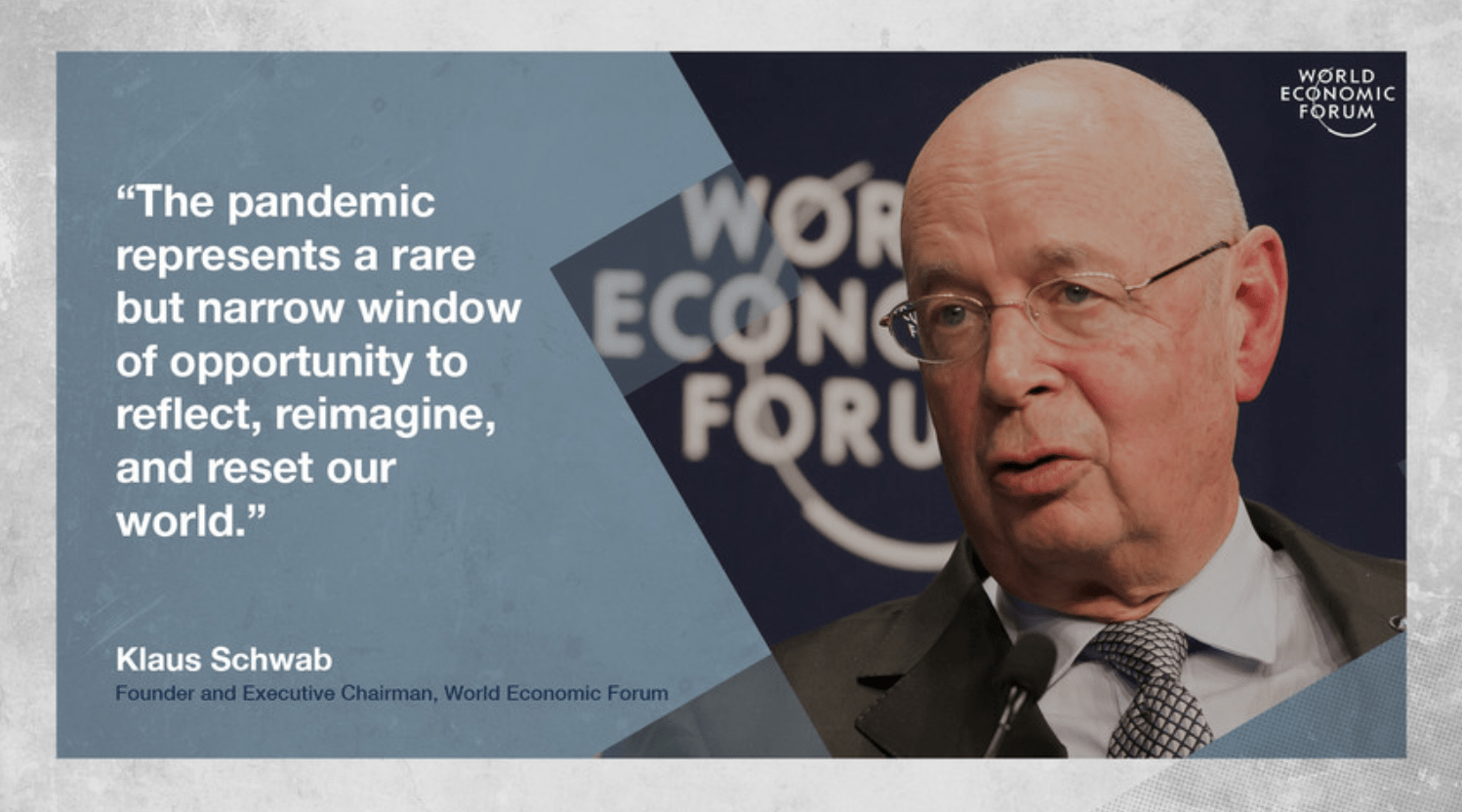
A big inspiration for them was the USA’s Marshall Plan, which enabled the financially and structurally ruined nations of western Europe to “build back better” after the Second World War and also constituted a massive advance for the profitability and domination of US socio-economic-military power.
They are quite blatant about this, in fact: “The Marshall Plan did much to put European factories, businesses, schools, and social programs back on their feet. And, as Marshall had predicted, by lifting up the stricken nations of Europe, the United States helped itself, too. It forged stronger trade and political ties to those nations, which were ready to engage in international commerce much sooner than they would have been without the Marshall Plan. Today, with the climate crisis upon us, some people have called for a global or green Marshall Plan for the world”. (38)
And they add: “Would programs like these be expensive? Yes, but the New Deal and the Marshall Plan proved that governments can find resources when they have to. More recently, the US government spent enormous sums bailing out bankrupt financial institutions and buoying up the economy after a financial crisis and recession in 2008–2009 and again amid the COVID-19 economic downturn. The money is there—if the need is clear and people demand it And the need for climate action is clear. People and movements across the United States and around the world are calling for their governments to meet the climate crisis with sweeping programs of changes”. (39)
So there we have it. “Sweeping programs of change” involving enormous amounts of money directed to helping “international commerce”. This is the same “disaster capitalism” which the authors decried earlier in the book, the moment “when the rich and powerful take advantage of painful shocks to widen existing inequalities instead of correcting them”. (40)
It is telling that at a time when people are increasingly clued up about the Great Reset, Klein was wheeled out on the once-interesting The Intercept site to declare that any such insight was “a viral conspiracy theory” which “blends together legitimate critiques with truly dangerous anti-vaccination fantasies and outright coronavirus denialism”.
In 2021, Naomi Klein is no longer warning us about the global ruling class’s “Shock Doctrine” but, cynically and hypocritically, helping to advance it.

NOTES
1. Naomi Klein with Rebecca Stefoff, How To Change Everything: The Young Human’s Guide to Protecting the Planet and Each Other, Athenium Books for Young Readers, 2021, e-book. All references (as e-book % position) are to this work.
2. 22%
3. 22%
4. 46%
5. 42%
6. 50%
7. 39%
8. 35%
9. 40%
10. 40%
11. 7%
12. 7%
13. 80%
14. 7%
15. 68%
16. 26%
17. 27%
18. 25%
19. 26%
20. 17%
21. 61%
22. 64%
23. 77%
24. 25%
25. 13%
26. 13%
27. 77%
28. 77%
29. 77%
30. 75%
31. 13%
32. 88%
33. 50%
34. 72%
35. 80%
36. 92%
37. 89%
38. 75%
39. 75-76%
40. 22%
We are delighted to publish a short extract from Darren Allen’s newly-published Self and Unself. A review by Paul Cudenec can be found here and more info on the book here.
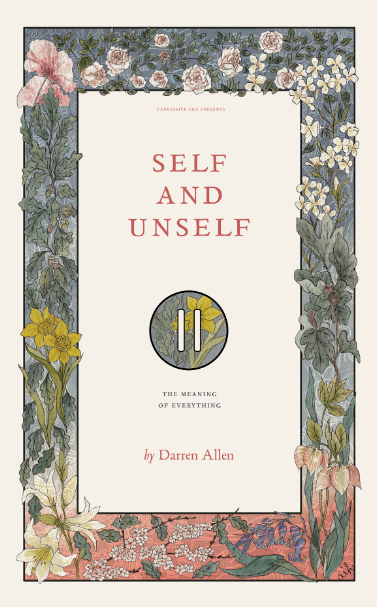 A great thinker does not hammer truth to the wall with the nails of a system, because he knows in doing so the truth will die. Instead, he presents his conscious experience of life, either structuring this description with an easily understood system, or ignoring maps and models altogether. It is life which matters to our greatest philosophers, which is why their work is like life; strange, funny, simple, vivid and, ultimately, elusive. Great philosophy, taking the principle of nature as its source and subject, is like something in nature, the growth of ivy perhaps, or the song of a wren, or the activity of an ant’s nest; messy perhaps, erratic here and there, but it holds together as one, and it speaks.
A great thinker does not hammer truth to the wall with the nails of a system, because he knows in doing so the truth will die. Instead, he presents his conscious experience of life, either structuring this description with an easily understood system, or ignoring maps and models altogether. It is life which matters to our greatest philosophers, which is why their work is like life; strange, funny, simple, vivid and, ultimately, elusive. Great philosophy, taking the principle of nature as its source and subject, is like something in nature, the growth of ivy perhaps, or the song of a wren, or the activity of an ant’s nest; messy perhaps, erratic here and there, but it holds together as one, and it speaks.
Abstract philosophy, on the other hand, is similar to a power-tool; well reasoned, internally coherent, but lifeless, humourless and mechanical. It is conspicuously bereft of interesting examples or meaningful metaphors from life, or even a sense that life, the living reality we humans are part of, is anywhere involved, for the simple reason that abstract philosophers do not really live. If they started addressing life, putting in examples and metaphors from it, the chronic poverty of their lives would be instantly exposed, and that won’t do. Better to rumble on and on about matters of no interest or concern to anyone but dried up philosophical bean-counters.
Academic philosophers spend most of their lives in institutions. They are institutionalised, and paid to manufacture justifications for an institutional — which is to say, hyper-specialised and unreal — existence. This is why they never have anything to say in any other medium, or even any other field. Nothing creative, certainly, nothing personal or human that would enable you to experience that from which such qualities arise, their character or our context (the world that appears in the work of professional philosophers is completely unrecognisable to anyone who is on the receiving end of it). It’s also why you so very rarely get the sense reading philosophy that there is a real human being behind the words, an individual who lives in the real world, a friendly companion. It’s the same with the science that so much philosophy trails after, where use of the word ‘I’ evokes a sense of shame, masquerading under an almost obsessive need to be ‘objective’.
The individual, the selfless I, is irrelevant to matters of fact, and that, we are told, is what we are dealing with here. Except it isn’t, is it? Philosophy is not primarily about matters of fact, but about the ultimate “cause” and quality of those facts. Philosophy is supposed to address itself to pressing questions of existence, to the reality and nature of consciousness, love, art, beauty, god, self, sex, death, creativity, madness, addiction and freedom, none of which can be reduced to rational fact and logical argument any more than the taste of orange juice can be reduced to a description of the effect of water, sugar and citric acid on the relevant cells of the body.
This is why many students who take philosophy degrees have the distinct feeling that they’ve got on the wrong train. They expect to be dealing with the towering mysteries of human existence, they expect to be studying the accounts of the immortals who went before us, who attempted to scale the same heights, they expect to be guided on this odyssey by interesting people who have made the same journey and returned with pristine insights into the path ahead. What they find instead is a cross between a librarian and an accountant piling up items of knowledge like coloured beads then handing them out to confused and bored young people who are expected to categorise them in, at best, a slightly different way to those who preceded them.

5. William Morris: an orgrad inspiration
The latest in our series of profiles from the orgrad website.
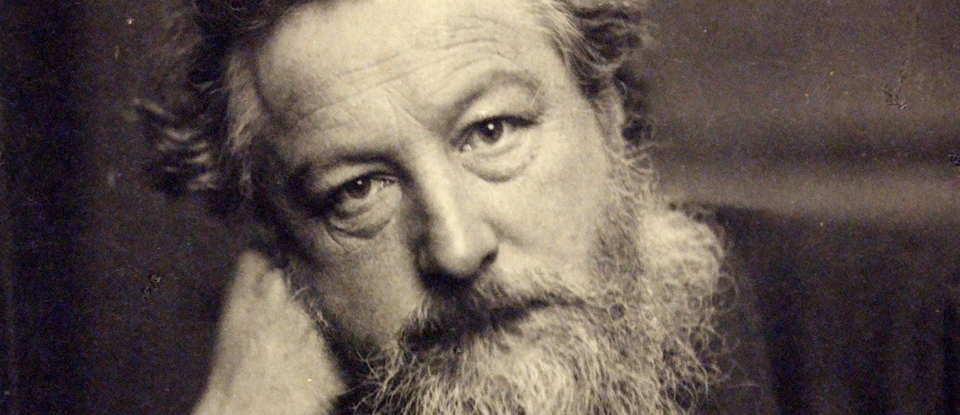
“Apart from the desire to produce beautiful things, the leading passion of my life has been and is hatred of modern civilization”
William Morris (1834-1896) was a writer, poet, designer, activist and one of the primary figures in the organic radical tradition.
As part of the Pre-Raphaelite arts movement, he expressed a deep and aesthetic aversion to the modern industrial world of the Victorian England into which he was born.
At the same time he understood that all the shallowness and ugliness he so despised had been created by the commercial mindset, by capitalism in fact, and he threw himself into left-wing libertarian politics, calling for a socialist revolution.
Biographer Stephen Coote explains that Morris had become “acutely aware of something rotten at the very core of society”. (1)
Morris himself wrote that society “is grown so corrupt, so steeped in hypocrisy and lies, that one turns from one stratum of it to another with helpless loathing”. (2)
In the essay ‘How I Became A Socialist’, written two years before his death, Morris declared: “Apart from the desire to produce beautiful things, the leading passion of my life has been and is hatred of modern civilization”. (3)
It had become clear to him that the “eyeless vulgarity” of the capitalist world had destroyed art, he said: “The hope of the past times was gone, the struggles of mankind for many ages had produced nothing but this sordid, aimless, ugly confusion; the immediate future seemed to me likely to intensify all the present evils by sweeping away the last survivals of the days before the dull squalor of civilization had settled down on the world”. (4)

Like Ferdinand Tönnies, who was writing at the same time, Morris identified the commercial spirit, the obsession with money, as being the key to the vulgarity of contemporary society.
In A Tale of the House of the Wolfings (1889), he adopted motifs from Icelandic literature to create a narrative in which “he contrasts the commercial individualism of the Romans to the communal life of the Gothic tribe”. (5)
“Is money to be gathered?” Morris asked in ‘The Lesser Arts’. “Cut down the pleasant trees among the houses, pull down ancient and venerable buildings for the money that a few square yards of London dirt will fetch; blacken rivers, hide the sun and poison the air with smoke and worse and it’s nobody’s business to see or it or mend it: that is all that modern commerce, the counting-house forgetful of the workshop, will do for us herein”. (6)
Morris understood all too well that capitalist economics and industrial pollution are two parts of the same thing.

Coote notes: “That commercialism was the chief polluter of the English countryside was a point Morris repeatedly made with a passion that seems ever more relevant to our times”. (7)
What futility in trying to reform capitalism to make it “greener” or “sustainable”, or in trying to manage away social tensions in urban society, when the problem lies in the whole underlying structure of capitalism itself!
Morris wrote in ‘Useful Work Versus Useless Toil’, in 1885: “All our crowded towns and bewildering factories are simply the outcome of the profit system. Capitalist manufacture, capitalistic exchange, force men into big cities in order to manipulate them in the interests of capital.
“There is no other necessity for all this, save the necessity for grinding profits out of men’s lives, and of producing cheap goods for the use (and subjection) of the slaves who grind”. (8)
While some gullible “socialists” were happy to swallow the capitalist lie of “progress”, Morris saw that machine society was built solely on the desire to exploit.
He wrote of so-called “labour-saving” machines: “What they really do is to reduce the skilled labourer to the ranks of the unskilled, to increase the number of the ‘reserve army of labour’ – that is, to increase the precariousness of life among the workers and to intensify the labour of those who serve the machines (as slaves their masters)”. (9)

Morris saw clearly that employment often amounted to nothing more than “slaves’ work – mere toiling to live, that we may live to toil”. (10)
He added: “Most people, well-to-do or not, believe that, even when a man is doing work which appears to be useless, he is earning his livelihood by it – he is ‘employed’ as the phrase goes; and most of those who are well-to-do cheer on the happy worker with congratulations and praises, if he is only ‘industrious’ enough and deprives himself of all pleasure and holidays in the sacred cause of labour.
“In short, it has become an article of the creed of modern morality that all labour is good in itself – a convenient belief to those who live on the labour of others”. (11)
Morris contrasted the “sham art” (12) of capitalism with the authentic art produced by craftsmanship.
Real art was derived not from sterile machinery but from living Nature, who expressed herself through the skill and sensibility of the artisan.
He said: “Everything made by man’s hands has a form, which either must be beautiful or ugly; beautiful if it is in accord with Nature, and helps her; ugly if it is discordant with Nature, and thwarts her; it cannot be indifferent”. (13)
 This principle was very much reflected in Morris’s celebrated textile and wallpaper designs and also, writes Alfred Noyes, in his poetry, where “the beats change with absolute spontaneity just as the thought or emotion dictates; … with the natural and harmonious freedom and flexibility of organic life”. (14)
This principle was very much reflected in Morris’s celebrated textile and wallpaper designs and also, writes Alfred Noyes, in his poetry, where “the beats change with absolute spontaneity just as the thought or emotion dictates; … with the natural and harmonious freedom and flexibility of organic life”. (14)
This “deep, sensuous response to nature” (15) led Morris, says Coote, towards the idea of peasant art – “the art of ordinary people living in harmony with nature, unstrained and intuitively moral”. (16)
He and his fellow Pre-Raphaelites found this art, above all, in “the more cooperative world of the Middle Ages” which had been swept away by the “woeful artificiality” of ugly modern commercial-industrialism. (17)
They enthused over medieval architecture and over artists such as Albrecht Dürer, imitating the nature-inspired harmonious simplicity of these aesthetics.
In this, Morris and his friends in the Pre-Raphaelite Brotherhood were very much influenced by the art critic and writer John Ruskin, whom Morris described as one of the few people of his era “in open rebellion” (18) against the industrial system, its thinking and its tastes.
Ruskin, in his search for cultural renewal in the face of modern baseness, had urged the young artists of his day to “go to Nature… rejecting nothing, selecting nothing and scorning nothing”. (19)
Writes Coote: “When the second volume of The Stones of Venice and its great chapter on ‘The Nature of Gothic’ appeared in 1853, The Brotherhood discovered their sacred text.
“To Morris, reciting the book’s set-piece passages to his Oxford friends, Ruskin was the master who both formulated his deepest discontents and gave voice to his sense of mission.

“When, at the end of his career, Morris printed an edition of Ruskin’s ‘The Nature of Gothic’, he described it as ‘one of the few necessary and inevitable utterances of the century’”. (20)
Morris took Ruskin’s identification of a profound cultural and social malaise arising from industrialism, and took it in a more overtly radical political direction.
In 1883 he joined Britain’s first socialist party, the Democratic Federation, later renamed the Social Democratic Federation, and then helped form the more revolutionary Socialist League alongside, notably, Ernest Belfort Bax.
The anarchist Peter Kropotkin, living in England at the time, was one of the many radical left-wing visitors to Morris’s home during his years of energetic political organising.
Morris’s political engagement was very much a continuation of his cultural critique of industrial capitalist society. Noyes writes that “his socialism was the slow, inevitable outcome of his artistic sincerity – it was forced upon him as an artist by the conditions of modern life”. (21)
He understood that reform would not be enough to change the course of civilization and bring about the de-industrialized libertarian socialist society he describes, notably in News from Nowhere, which would be based on “benevolent nature and small, self-governing communities”. (22)
He wrote in a letter to Georgina Burne-Jones: “One must turn to hope and only in one direction do I see it – on the road to Revolution: everything else is gone now”. (23)

It was important for Morris that there was an informed vision for the future behind this revolution, so that when industrial capitalism fell, it would be replaced by a healthy new authenticity.
He wrote in a letter to the Daily News: “Discontent is not enough, though it is natural and inevitable. The discontented must know what they are aiming at when they overthrow the old order of things.
“My belief is that the old order can only be overthrown by force; and for that reason it is all the more important that the revolution… should not be an ignorant but an educated revolution”. (24)
The 1880s were marked by riots against the British imperial capitalist system and police brutality against socialist meetings.
This peaked with “Bloody Sunday” on November 13, 1887, when 80,000 to 100,000 protesters flooded the streets of London and Trafalgar Square was cordoned off by police in ranks four deep.
The rebellious crowds were attacked by police, leaving 200 in hospital and three of them dead.

“Mounted police struck out with batons at the gathering crowds. Further away, three hundred foot soldiers with fixed bayonets and twenty rounds of ammunition each stood ready, supported by a battalion of Life Guards”. (25)
It is a familiar story at every time and in any place that the capitalist system is seriously threatened by popular revolt: the pretence of “democracy” is quickly abandoned in favour of direct physical violence in defence of its power.
The effect of this repression was to steer most of the British left on to the path of cowed reformism – the very dead end against which Morris was warning.
Video links: William Morris, Socialism, and His Influences on Tolkien (3 mins), William Morris: Art and Socialism (4 mins)

1. Stephen Coote, William Morris: His Life and Work (Oxford: Past Times, 1995), p. 137.
2. Alfred Noyes, William Morris (London: Macmillan & Co, 1908), p. 127.
3. William Morris, ‘How I Became A Socialist’, News From Nowhere and Selected Writings and Designs, ed. by Asa Briggs (London: Penguin, 1984), p. 36.
4. Ibid.
5. Coote, pp. 81-82.
6. William Morris, ‘The Lesser Arts’, News From Nowhere and Selected Writings, p. 103.
7. Coote, p. 146.
8. William Morris, ‘Useful Work Versus Useless Toil’, News From Nowhere and Selected Writings, pp. 131-32.
9. Morris, ‘Useful Work Versus Useless Toil’, News From Nowhere and Selected Writings, pp. 133-34.
10. Morris, ‘Useful Work Versus Useless Toil’, News From Nowhere and Selected Writings, p. 119.
11. Morris, ‘Useful Work Versus Useless Toil’, News From Nowhere and Selected Writings, p. 117.
12. William Morris, ‘The Worker’s Share of Art’, News From Nowhere and Selected Writings, p. 142.
13. Morris, ‘The Lesser Arts’, News From Nowhere and Selected Writings, p. 84.
14. Noyes, p. 119.
15. Coote, p. 12.
16. Coote p. 134.
17. Coote, p. 144.
18. Morris, ‘How I Became A Socialist’, News from Nowhere and Selected Writings, p. 35.
19. The Pre-Raphaelites (London: Tate Gallery/Penguin, 1984), p. 52.
20. Coote, pp. 17-18.
21. Noyes, p. 126.
22. Coote p. 182.
23. Coote, p. 156.
24. Coote, p. 157.
25. Coote, pp. 159-60.

If we are going to effectively fight back against the 21st century techno-fascist system we are going to have to let go of many of the political terminologies and divides of the past and reframe our resistance in terms of what is really happening out there. We are in a whole new war, which we cannot afford to lose! An excellent way to start this process is to watch and absorb this key new 25-minute video, Globotics, from our friends at Book of Ours. Also highly recommended are their recent mini-videos Geofencing, Infantilized, and Reciprocity.

* * *
Solidarity with our comrades from 325 magazine, who have met with police-state repression on account of their uncompromising opposition to techno-fascism. A communiqué explains that, on March 29 2021, Dutch police raided a data center and seized their nostate.net server as the part of a criminal investigation into “terrorism”. Say 325: “This was not just an attack by the Dutch police, but was done in coordination with the Counter Terrorism Unit of the United Kingdom in connection with their recent repressive attacks upon the anarchist circles in this country. It is also no coincidence that this repressive attack occurs now after our recent publication of 325 #12 – Against the Fourth and Fifth Industrial Revolutions. This publication that we feel hits to the core of what the states and capitalism are pushing forward, before and even more so now, under the cover of the Covid-19 pandemic is a direct threat to their plans of subjugation, of robotosizing and automizing everything”.

* * *
“While some among us pass the time accusing well-meaning people of racism, the bio-security state is erecting its digital surveillance control grid all around us, through the creation of ‘impact’ economies, initiated by the finance and technology oligarchs”. An important warning in this 35-minute video from Yolande Norris-Clark.

* * *
Tanzania will be “put back on the global map” following the mysterious death of anti-lockdown president John Magulfi, according to the BBC. Its glowing May 4 report on his successor Samia Suluhu Hassan announces that she “challenges Covid denial” and adds that “it is also expected that President Samia will take a less aggressive stance than Magufuli towards international companies in the country”. As this March 29 article by Jerely Loffredo and Whitney Webb warned: “With Magufuli’s lengthy disappearance followed by his apparent sudden death from heart failure, the country’s future is now set to be determined by Tanzanian politicians with deep ties to the oligarch-beholden United Nations and the World Economic Forum”.

* * *
The primary issue to fight on now is that of bodily sovereignty, says the campaigning Warwickshire Against Lockdown blog in this April 14 article, insisting that the state has no right to forcibly inject people. It adds: “Nor does any government have the right to impose discriminatory measures based upon ‘vaccination’ status, nor does any government have the right to mandate measures such as mask wearing which are harmful to those forced to do so”.

* * *
Social impact investment is a key part of the Great Reset plan to control and exploit humankind, but it hides from scrutiny by dressing itself in the clothes of “progressive” politics. Raoul Diego takes a useful look at what is going on in ‘The Best Intentions of Sir Ronald Cohen: Building the Crypto-Corrals of Social Investment‘. More on Cohen here.
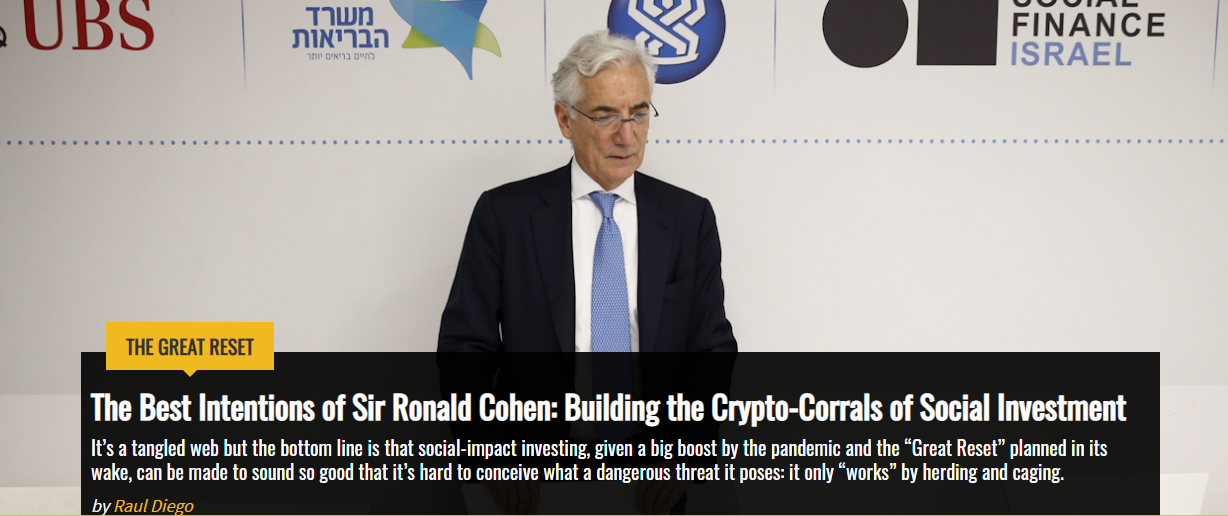
* * *
The Pushback is a new 80-minute documentary from Oracle Films, looking at the current global Covid Coup and the upsurge of popular resistance across the whole world. Essential viewing for rebels everywhere.
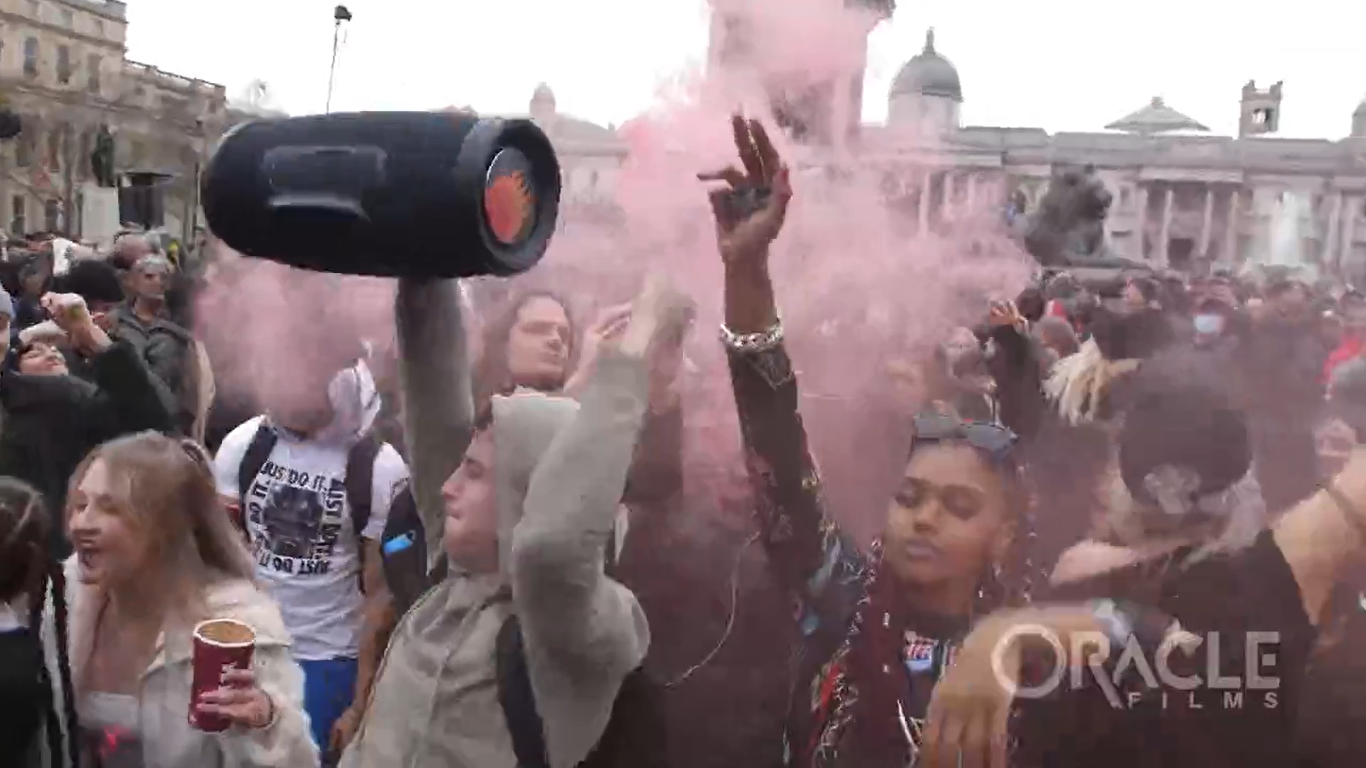
* * *
The blatant lack of coverage of the recent mega-protest against Covid tyranny in London is analysed in this article from our fellow freedom-fighters at the Essex Stirrer. They write: “Given that adopting a lockdown sceptic/anti-great reset position is enough to get us tarred as social outcasts by those peddling narratives used to justify restrictions on our freedoms, the media stance towards what happened on Sat 24th April doesn’t come as much of a surprise”.
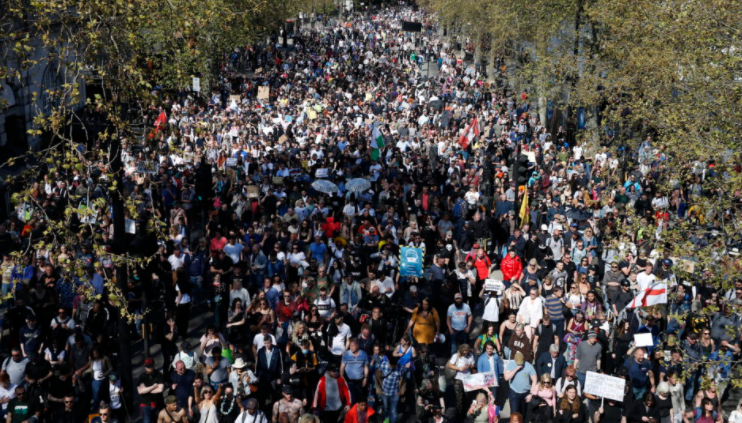
* * *
“European countries are taking advantage of cheap fracked gas to drive a boom in the plastics industry”, reports this article on the National Geographic site. Funny how plastic plays such a key role in the “hygienic” New Normal…

* * *
“If everything is reopened, then what is the carrot going to be? How are we going to incentivize people to actually get the vaccine?” Dr Leana Wen somewhat let the cat of the bag regarding global lockdowns when she appeared live on CNN… The interviewer’s face is a real picture.

* * *
The rapid unravelling of the new “Great Reset” order is highly likely, argues Michael Meurer on the Reimagining Politics site. He adds: “Each of us is called upon to keep our wits in order to navigate these choppy waters with vision, intelligence, persistence, vigilance and engagement. Both the thrill and danger of the most intense rapids lie ahead”.
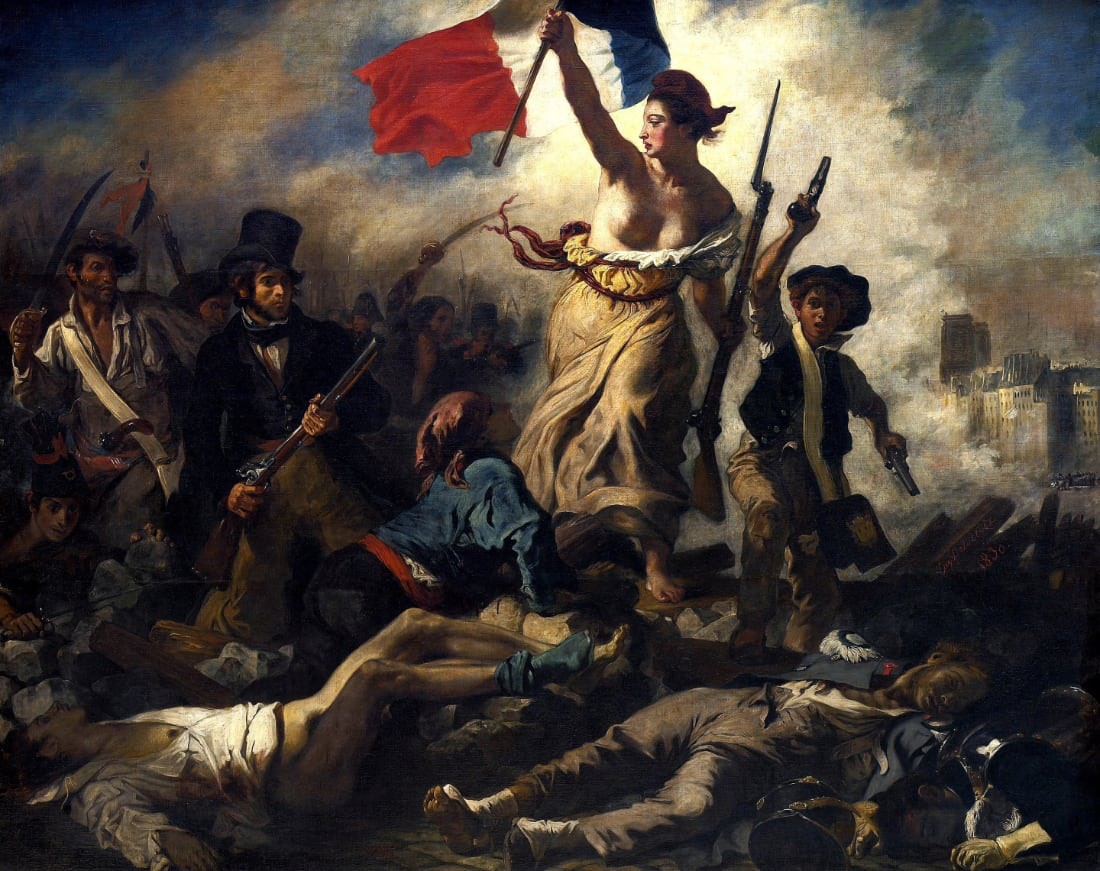
* * *
“The separation of man from his essence is the cause of his disharmony and unfulfilment. His quest is the purification of the dross and the activation of the gold”.
Idries Shah

(For many more like this, see the Winter Oak quotes for the day blog)
—–
If you like this bulletin please tell others about it. Subscribe by clicking the “follow” button.
—–
Back Issues
Follow Winter Oak on Twitter at @WinterOakPress

I have been running a solar system for over twenty years and it is only good for of grid living. It does nothing to help the environment. And to be honest it is a dollar limited system. More money in better system more rubbish at its end of life cycle, less money in crap system and still a pile of rubbish at days end.
LikeLike
Thanks for the link. I think that it would be worth looking into which corporations are leaders and which are followers in the Great Reset. The energy industry for example, which in the UK is dominated by a cartel of six companies, has never had any interest in encouraging consumers to reduce their consumption, but will follow the ‘green’ agenda where it can be seen to boost the share price and conform to the agenda set by government.
As you have highlighted, the manufacture, transportation and disposal of solar panels is hardly environmentally sustainable in the true sense of the term. Additionally, a great many of these solar panels are being sited on farmland in temperate climate areas, displacing that farmland’s intended arable use (whereas the originally envisaged locations for solar panels, back in the 1970’s, were in desert areas such as Arizona, where they could provide power via the grid for air conditioning).
LikeLike